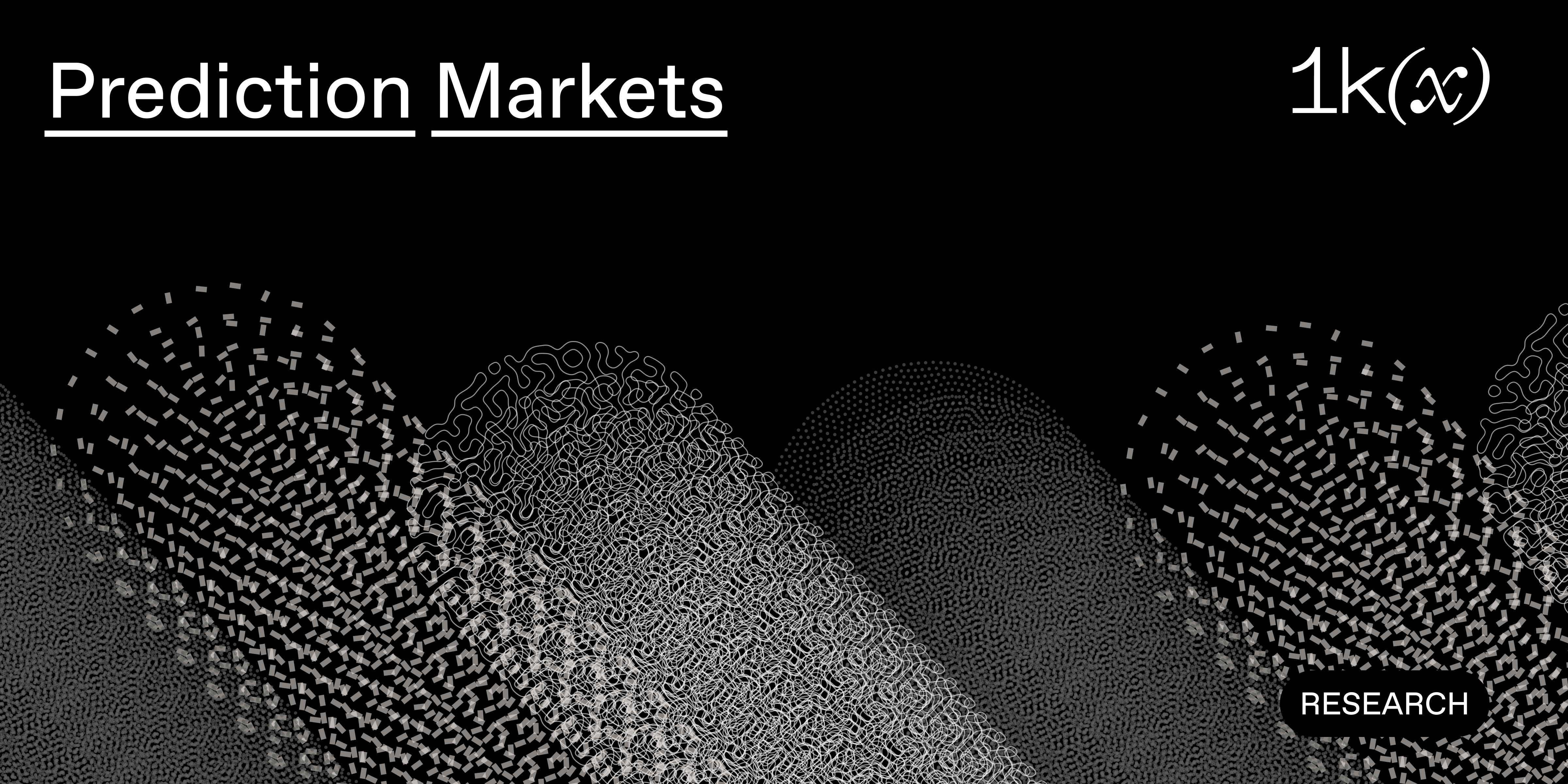Research Summary
The report explores the evolution and potential of prediction markets in the blockchain space, focusing on the challenges and opportunities they present. It discusses the role of liquidity providers, the impact of information asymmetry, and strategies to mitigate toxic flow. The report also examines innovative mechanisms like parlays, perpetuals, and tokenized leverage, and the potential of emerging categories like AI gaming and onchain data.
Key Takeaways
Challenges in Prediction Markets
- Volatility and Unpredictability: The report highlights that prediction markets face challenges due to high volatility and unpredictable outcomes, which deter market makers from offering substantial liquidity. This is particularly true in novel markets, such as predicting the return of a CEO or celebrity arrests.
- Information Asymmetry: Bettors with advantageous information can place positive expected value bets, posing a risk to liquidity providers. An example given is a user betting $60,000 on Tesla’s Bitcoin purchase at 33% odds, presumably with insider knowledge.
- Lack of Leverage Vehicle: The absence of a leverage vehicle in prediction markets makes them less attractive to retail users seeking “generational wealth,” as seen in the crypto space with assets like $BODEN and $TRUMP.
Strategies to Mitigate Toxic Flow
- Use of Liquidity Coordination Mechanisms: The report suggests that liquidity coordination mechanisms from the DeFi derivatives space can be employed to address liquidity issues. Stablecoin depositors can earn yield through vaults that deploy market-making strategies.
- Gradual Limit Order Books (GLOB): GLOB can combat toxic flow by adjusting prices based on the speed and size of orders. A taker with advanced knowledge would face increased costs due to slippage, thus limiting the potential loss for market makers.
- Redistribution Mechanisms: Mechanisms such as a winner’s rake, where a portion of the profits from informed traders is shared with the company or through order flow auctions, are employed in various markets to mitigate toxic flow.
Innovative Mechanisms in Prediction Markets
- Parlays: Parlays, popular in sports betting, offer high returns by combining multiple bets. They could gain traction in crypto due to low entry costs, potential for high rewards, and social sharing of winning bets.
- Perpetual Prediction Markets: Perpetual Prediction Markets were trialed by FTX in 2020 for the American Election outcomes, highlighting the challenges of volatile collateral requirements in prediction markets.
- Tokenized Leverage: Introducing tokenized leverage in prediction markets could attract professional traders by allowing them to borrow against their positions, potentially increasing liquidity and market activity.
Emerging Categories in Prediction Markets
- AI Gaming, Onchain Gaming, and General Onchain Data: These emerging categories are highlighted as areas with potential for crypto-native prediction markets. The use of autonomous agents (AAs) in betting is being pioneered, with the expectation that AAs could outperform humans in calculating expected value in markets with defined outcomes.
Actionable Insights
- Exploring Liquidity Coordination Mechanisms: Entities interested in prediction markets could explore liquidity coordination mechanisms from the DeFi derivatives space to address liquidity issues. This could involve allowing stablecoin depositors to earn yield through vaults that deploy market-making strategies.
- Implementing Innovative Mechanisms: Prediction market platforms could consider implementing innovative mechanisms like parlays, perpetuals, and tokenized leverage to attract more users and increase market activity.
- Investigating Emerging Categories: Stakeholders in the prediction market space could investigate emerging categories like AI gaming, onchain gaming, and general onchain data for potential growth opportunities.












